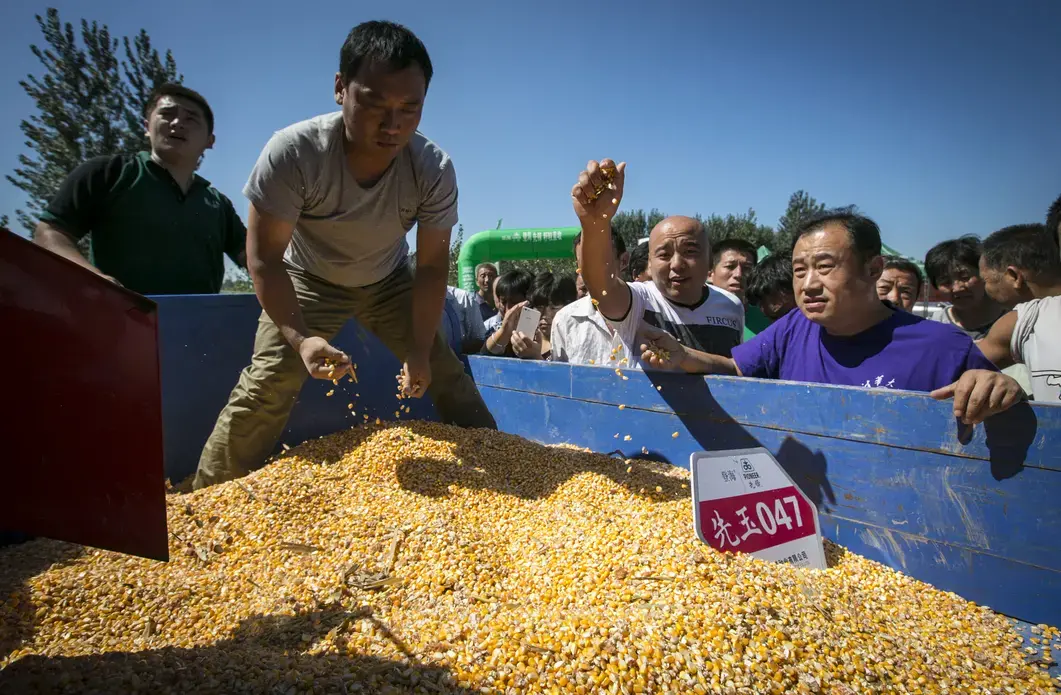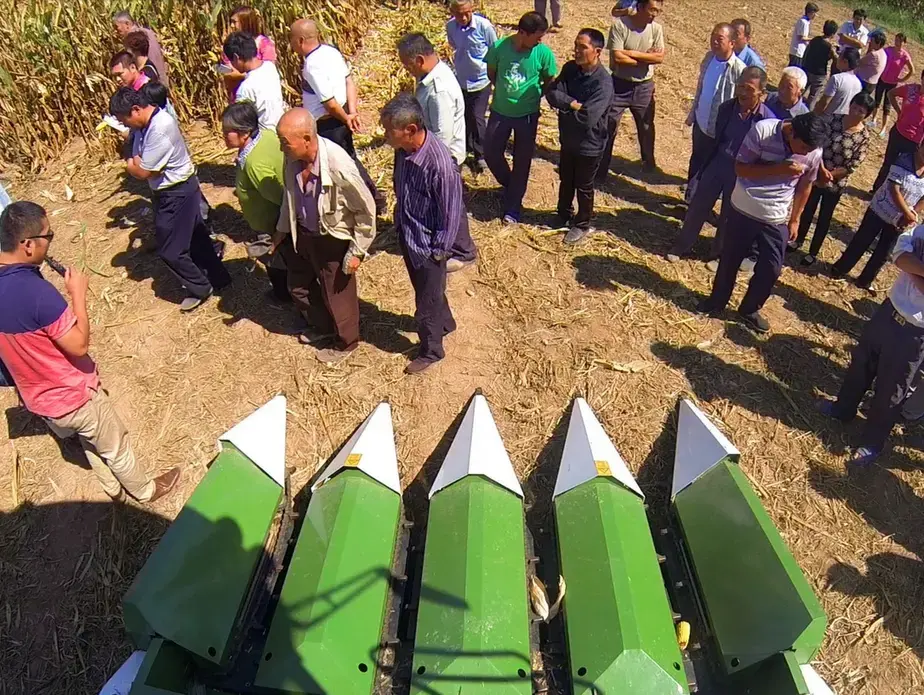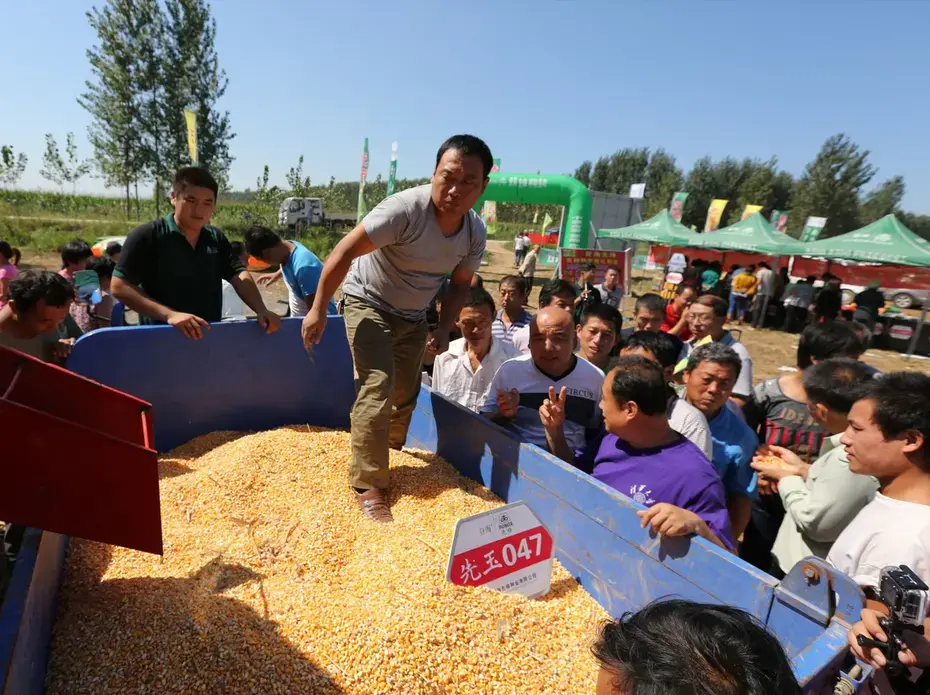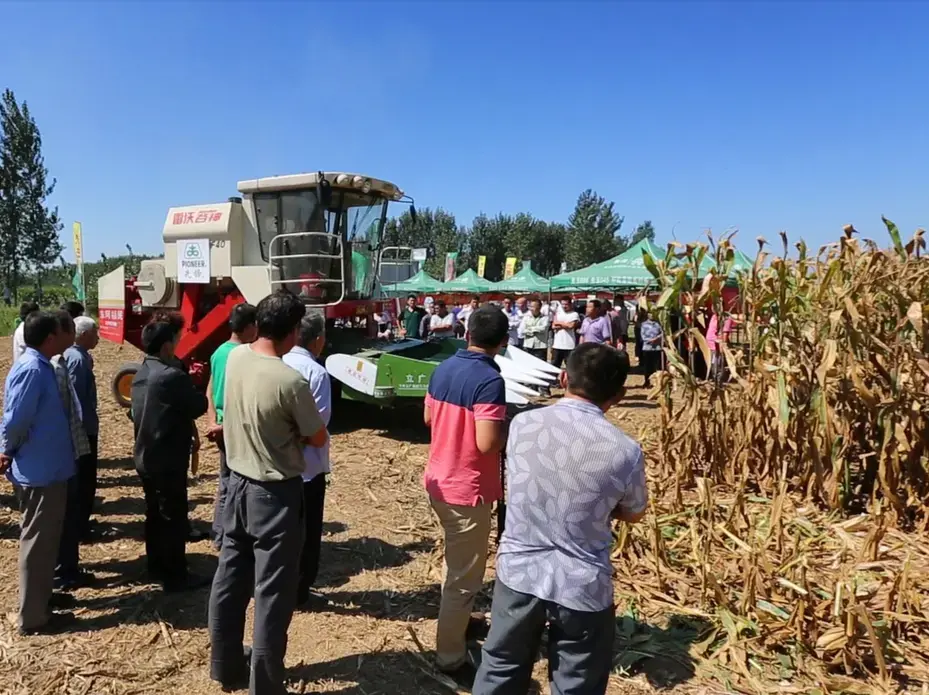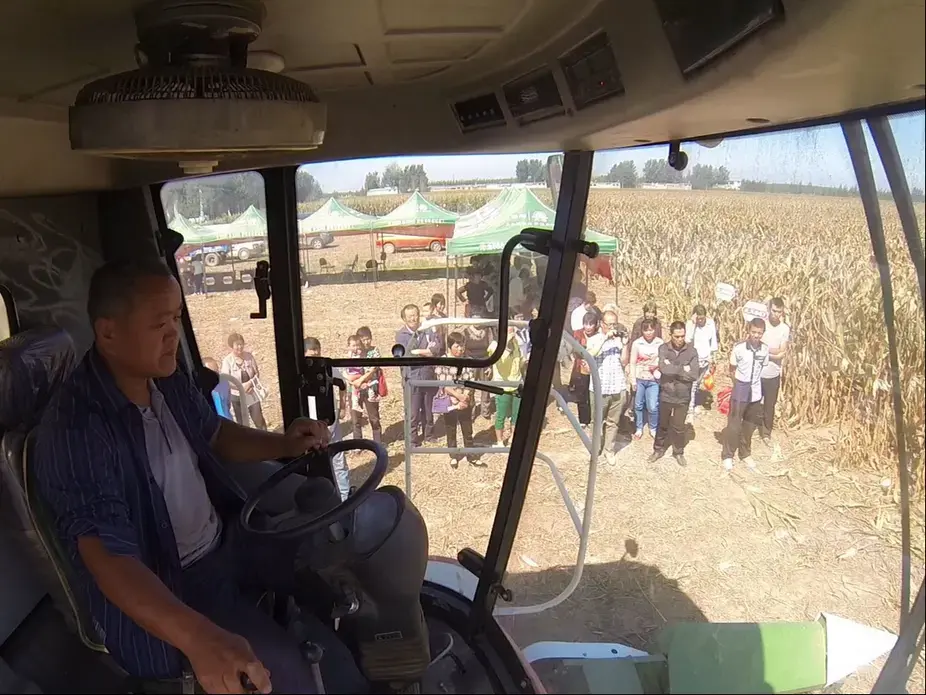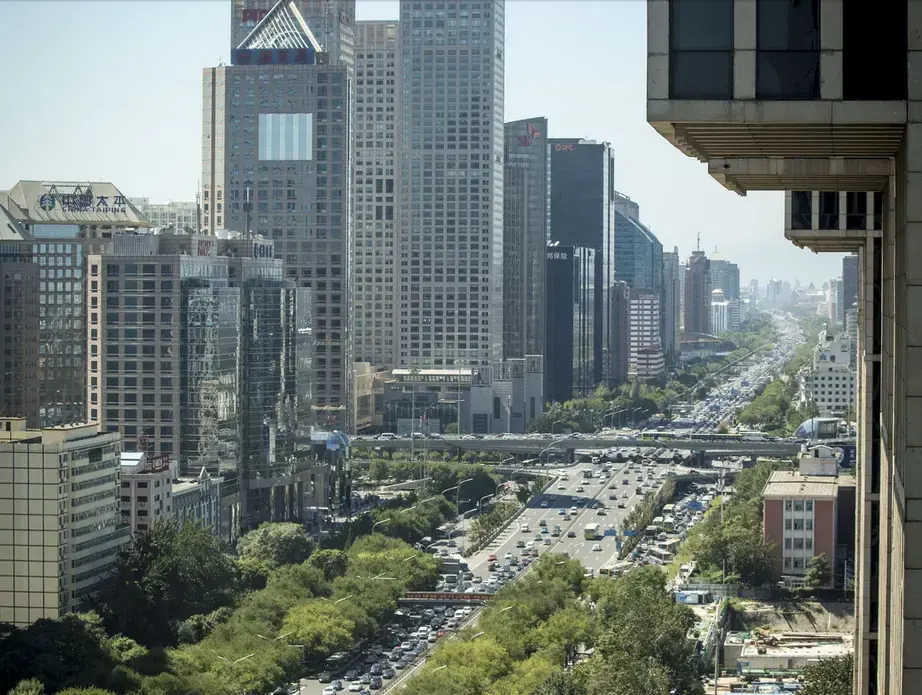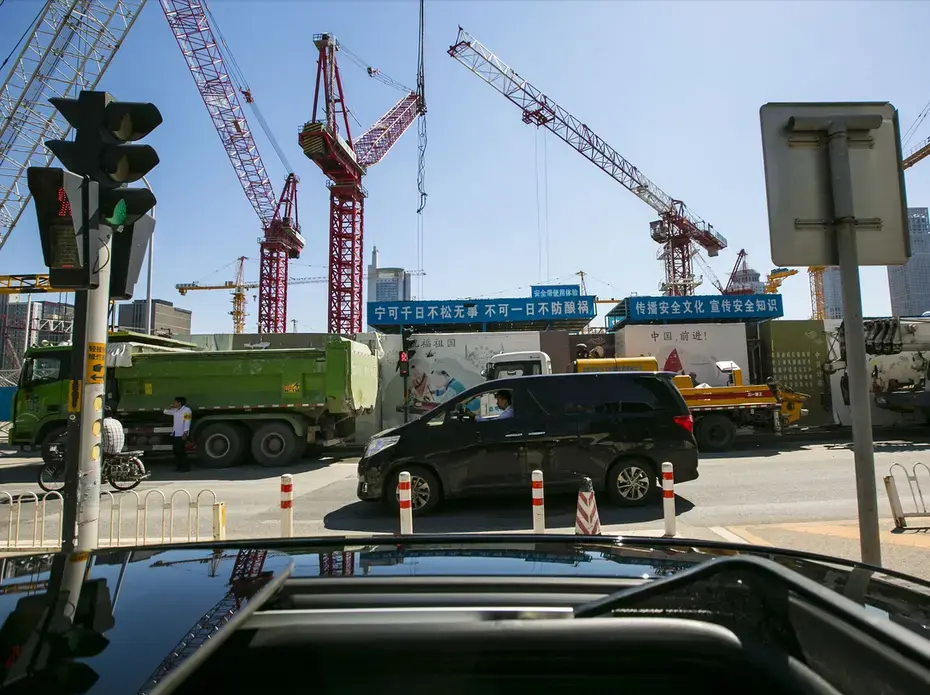Zhang Qianwei beams as farmers crowd around his grain cart, transfixed by a sight they've never seen before: kernels of corn pouring from a combine harvester.
This is Zhang's combine. It is tiny by Iowa standards, a wheat harvester attached to a four-row head to gather up the yellowing stalks. But this machine could be revolutionary, replacing labor that is quickly disappearing from the countryside.
Chinese agriculture, long dominated by lawn-sized plots of land harvested by hand, is rapidly growing larger. Farmers and entrepreneurs are acquiring more land and buying modern equipment. High-tech, mega-sized pork, dairy and poultry operations are replacing backyard production. And China is considering whether to allow farmers to plant genetically modified corn seeds.
These big dreams mean big opportunities for U.S. and Iowa agribusinesses. The rapid change in farming also could mean major environmental, political and economic risks for China, which has a fifth of the world's population and could soon have the world's largest economy.
President Xi Jinping and other leaders debate how much China should feed itself, and how much it should turn to the U.S. and others for help. Those decisions will ripple around the world, down to board rooms, farm fields and dinner tables in Iowa.
What happens in areas like the Yellow River valley, 350 miles south of Beijing, will offer lessons for the rest of a hungry world. Food productivity must double by some estimates to feed a global population of 9.6 billion by 2050. China embodies many of the world's challenges: A growing urban middle class that demands more meat and dairy collides against environmental constraints such as pollution and shrinking arable land.
"Without China's food security, how can we ever imagine an effective, realistic, sustainable global food security system?" asks Bill Niebur, who leads DuPont Pioneer's operations in China.
The Iowa company's solutions to the challenges in some ways mirror the Chinese government's: Encourage land consolidation, train farmers, improve hybrid seeds and subsidize the sale of combines and other modern equipment.
Niebur said Pioneer has collaborated closely with Chinese institutions, and officials have responded with an "open ear" to Pioneer's views. He says it's important to recognize that Chinese agriculture "needs to modernize, not necessarily Westernize."
Transforming China
Critics worry that Chinese agriculture already suffers from the worst of Western-style industrialized agriculture, adding to its pollution problems.
Intensive corn planting — without rotating with other crops — has led to excessive chemical fertilizer use and overworked soil in some areas. Manure from large pork confinements has polluted water, leading to algae blooms and other problems.
In its first national pollution census, the Chinese government found in 2010 that agriculture has become a bigger source of pollution than industry.
China's push to modernize its agriculture has other potential pitfalls, including a question that has violently wrenched the countryside in the past: Who should control the land?
The largest migration in human history is transforming life in China. The government wants to shift 100 million people from rural to urban areas by 2020 to accelerate economic growth.
New high-rise apartments and construction cranes tower over former farm fields in Jinan, the capital of Shandong province, as well as every major city in China. Illegal land grabs by local officials were a leading cause of social unrest in the 2000s. Although those abuses have subsided, how to fairly compensate farmers for land remains an outstanding question, said Damien Ma, a fellow at the Paulson Institute at the University of Chicago and co-author of "In Line Behind a Billion People."
Another tension point: how to encourage rural people to give up farming and turn over land to larger operators. The government owns the land, but farmers can buy or sell usage rights. Officials want to boost agricultural productivity and efficiency by consolidating small plots.
It's estimated that 160 million farm households control China's less than 300 million acres of farmland. Most farmers in this area of Shandong province, for example, have about a sixth of an acre of land.
That makes it difficult for companies like Pioneer, which must market to millions of small customers in China instead of thousands of large growers in the United States.
Chinese officials have said land reforms are necessary for agricultural development, but changes will be gradual.
Translation: It could take generations before most farms get significantly larger.
"If they solve the land issues, a lot of issues will be solved simultaneously," Ma said.
As official policy creeps along, money is rushing into China's ag industry, pushing larger operations.
"It's really a quantum leap from one extreme to the other," said Fred Gale, a senior economist with the U.S. Department of Agriculture and a China expert.
China leads the world in agriculture mergers and acquisitions, with an estimated $10 billion in deals so far this year, according to Smart Agriculture Analytics, a Beijing-based information firm. Private equity firms, real estate investors and industries ranging from Internet firms to steel makers are getting in on the action, investing in large-scale projects like dairy farms with thousands of cows.
"A lot of the time people running the farms are coming from outside ag," Gale said. "You can't really substitute capital and equipment for experience."
"It's a lot of people with money who assume they can make money in farming. But it's not a guarantee."
Big Dreams
All over China, farmers and entrepreneurs have big dreams. Companies display billboards showing their plans — multimillion-dollar expansions of livestock breeding or processing operations, for example, with gleaming high-rise headquarters. All will be completed in two to three years, executives promise.
Local officials pull up in black imported sedans, jump out to shake your hand and express support for the bold initiatives.
Will the plans happen? "You have to expect white elephant projects" in Chinese development plans, Ma said.
Yet China's rapid growth in other industries has astounded critics, and so could the growth of agriculture. "It's an area that has a lot of potential to grow," Ma said. "You can make a lot of money off of it."
The owner of the combine in Shandong province, Zhang Qianwei, has big dreams on a much smaller scale.
Zhang farms about 132 acres that he rents from 170 households. That makes him one of the largest growers in the area, in addition to being a Pioneer seed dealer.
The households rent out their land because they don't have the labor to work it, he said. Young people have left for the cities to make in a month what they could make in a year on the farm. Their elders are left behind.
He pays about $1,000 an acre to rent the land, and his profits are about $400 to $500 an acre, he says.
Zhang is sinking a major stake in the business: He invested $100,000 in a grain dryer and a building to store the combine and other equipment. He financed all of it, he said.
Zhang, 44, used to work in the chemical industry for 20 years, and made good money. But he saw opportunity in agriculture. A college graduate, he has taken additional classes to learn about agriculture management.
His dreams include expanding to farm about 1,600 acres, unheard of in this area. To do so, he'll need financial support from the government, and he also wants officials to invest in roads, electricity and training to help large growers.
Come back in three to five years, Zhang tells American visitors. Just watch what will happen.

Education Resource
Meet the Journalists: Lynn Hicks and Rodney White in China
Chinese agriculture, long dominated by lawn-sized plots of land harvested by hand, is rapidly...




